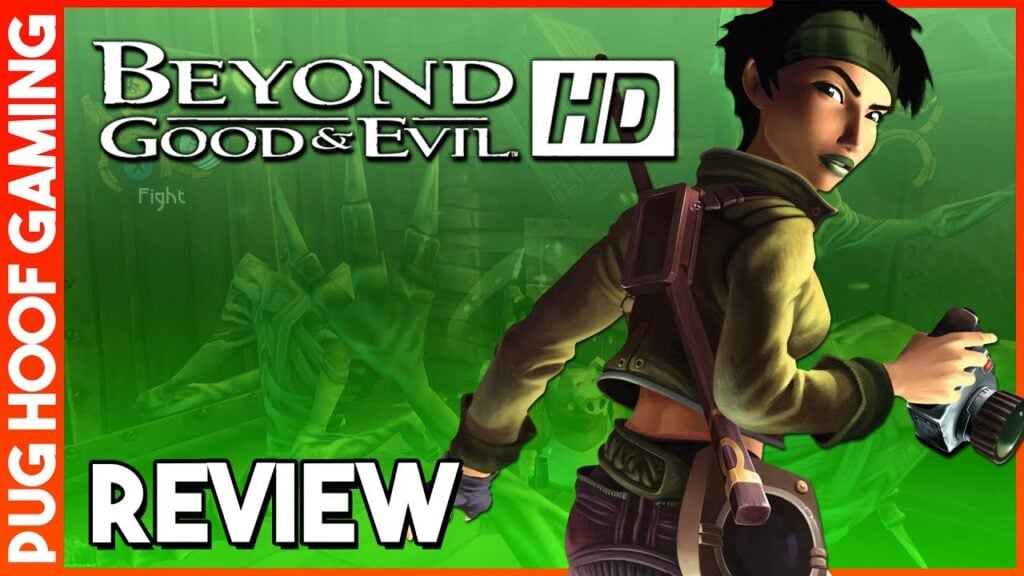This week, we are taking pictures of weird and wonderful creatures, while saving the world from a corrupt government. And aliens.
Name: Beyond Good & Evil HD
Developer: Ubisoft Shanghai
Publisher: Ubisoft
Released on: Xbox 360, PS3
Original Release Date: March 2011
When you are so very late to a game that is so held in high regard so so very long, it’s hard for your impressions not to be coloured by all those years of friends and media telling you how great that game is. Honestly, very few games can hold up to scrutiny after such expectation.
Somehow, Beyond Good & Evil does. At the time of release, it was critically acclaimed, yet didn’t sell as well as expected, making for a small and dedicated cult of fans. After years of being teased, these fans recently got a sniff of a sequel during Ubisoft’s E3 presentation in June. What better time for me to play this game for the first time, and finally strike it from my backlog after so many years.
Let’s get the review verdict out of the way first, eh? For a game that at this point was released a decade and a half ago, Michel Ancel and the various teams involved under Ubisoft’s wing created something truly special, a game that had the ambition to portray a very different narrative to what other releases were doing at the time. For that reason, this HD remaster ensures that Beyond Good & Evil successfully stands the test of time and remains as a milestone in gaming.
There are many reasons that make this game so special, but what does strike you immediately is the setting and overall presentation. Refusing to be bogged down with lengthy cutscenes and needless exposition, Beyond Good & Evil plops you into the world of Hillys and soon after becoming familiar with protagonist Jade and quote-unquote “Uncle”, Pey’j, you’re thrust into a plot involving a conspiracy between a shady government and a threatening alien race.
Trading as a photojournalist, Jade herself is unlike any other protagonist you’ve seen, even today. Yes, she’s female, but she’s portrayed somewhat realistically – An impressive feat in 2003 that still remains an exception in the medium of video games, a decade and a half later. As an orphan and a guardian of other orphans, she’s caring, brave and above all, likeable – While her occupation lends well to the photography mechanic used throughout the game. Around her is a small cast of characters that are equally likeable, from the grumpy yet warm personality of Pey’j, to the, never say die attitude of Double H, with the game’s cast conveyed through some pretty great voice acting for the time. However, for as well-rounded as the game’s characters are, it never feels like they’re fleshed out enough. You want to know more about these character’s stories, but you aren’t given enough to go on.
This action-adventure focuses on exploration, puzzle solving and as alluded to earlier, taking pictures. There’s a lucrative side-quest that involves taking pictures of all of Hilly’s wildlife so they can be catalogued for a research organisation, and they’ll pay you handsomely in return – And this cash is very handy for purchasing useful consumable items like health refills. There’s also several types of collectable available, with some just existing to relay extra narrative, or increase your maximum health – While there are also 88 pearls hidden throughout the game, used to trade with the local garage for vehicle improvements, and while you won’t need all of them to finish the game, you will need a fair amount in order to reach later areas.
While there’s combat, for a game of this type it’s a very rare occurrence, asking the player to employ stealth where possible, before resorting to violence only as a last option. Jade is a decent fighter, and can team up with her CPU controller partner to perform a special move where enemies are flung in the air and Jade can fling them into a chosen direction – Handy for bypassing some areas. The combat is overly simplistic, and not the most enjoyable part of the game – But that sort of feels like the point. This is a game that wants you to breathe it’s world and characters in and digest the message it’s trying to communicate to you. Having to battle enemies seems more like a concession towards the expectations of the game-playing public.
There is but one thing here that simply doesn’t work well, and that’s the camera. There are times when you’re caught in a particular view that makes it incredibly difficult to play the game, and even adjusting the position with the right analogue stick doesn’t help at times.
What Beyond Good & Evil has in ambition, it lacks in scale somewhat. It’s not a particularly long game by any stretch, nor a particularly challenging one, but on the flipside that ensures that it never outstays its welcome, and when you do finish the end credits, you do feel that the game’s end has come a little prematurely, and you’ll likely be ready for more, as I was. While there are a few sidequests and diversions, it feels like there could and should definitely be more to see and do, and there’s certainly more to be wrung from the setting of Hillys than what’s offered here. The game could have been twice as long and still not have outstayed its welcome – And how many games can you say that about?
The long-awaited sequel to Beyond Good & Evil appears to be a prequel – But here’s hoping we get to reacquaint ourselves with this cast of characters, someday.

